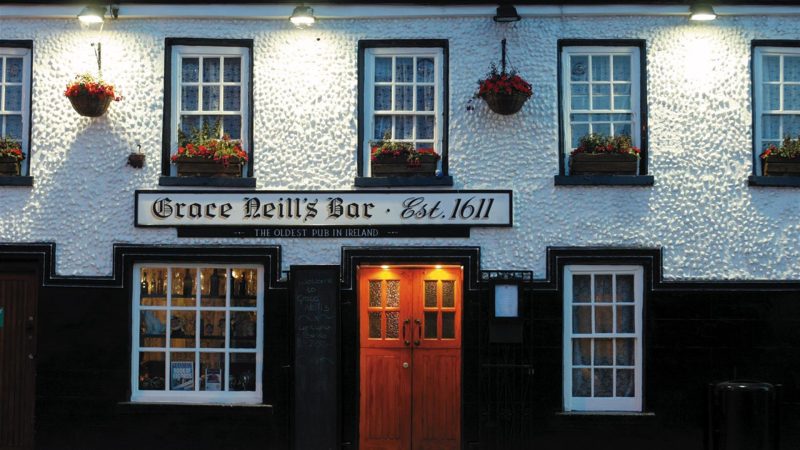The perfect festive pairing

Christmas is a busy time for any venue selling food and while wine is a natural fit for any festive table, but Belfast brewer and beer enthusiast, Alex Tennant says that increasingly, bistros, pubs and restaurants are exploring the exciting possibilities presented by pairing good food with the right beers…
Over recent years there’s been a renaissance in craft beer production. While the vast majority of beer produced internationally is dominated by a small number of giant multinationals brewing fairly uniform pilsner lagers, a rediscovery of the wide range of beer styles, and an appreciation for local, artisan beer production has led to an explosion in brewing.
As with other trends, the craft beer wave has reached Ireland somewhat later than other countries, but arrived it has, with an estimated 50 craft breweries now up and running on the island. There are 15 in Northern Ireland alone, with more to come over the next year. While initially, many breweries produced a conservative ‘holy trinity’ of pale ale, red ale and stout, there are now hundreds of local beers available in a wide range of styles.
It’s an exciting time for beer lovers in Ireland. Many people are discovering a world of beers that offer so much more flavour than the ubiquitous lagers and provide outstanding pairing possibilities with foods of all kinds.
Beer is without a doubt the most varied beverage on earth. It comes in a wide range of styles, from a smokey, dark porter to golden Belgian tripel and from a comforting, malty scotch ale to a delicate, aromatic witbier. Alcohol levels vary from barleywines at 11% ABV, imperial stouts at 9-10% ABV, IPAs, spicy saisons or Belgian tripels at 6-8% ABV, down to pale ales, bocks and dunkels at 3.5 – 5% ABV. And their flavour and aroma profiles range from floral, funk, fruit, biscuit, bread, grass, malt, cloves, liquorice, citrus, coffee, resinous, chocolate, vanilla and pine. In short this means that for every meal, there is a beer that matches it to perfection.
Beer and food, when paired well, transform each other, providing a stunning sensory experience which is so much more than the sum of its parts. While there is no easy ‘red wine with meat’ rule as far as beer goes, nevertheless pairing beer with food is really about relying on common sense and taking a few basic principles into consideration.
1: Match strength with strength
In the same way dishes vary in relation to their strength of flavour, so do beers. Delicate dishes such as sautéed fish or scallops match well with delicate beers such as witbiers. More strongly flavoured beers such as porters, stouts or smoked beers match well with more strongly flavoured foods, for example wintery oxtail stews or lamb shanks.
2: Find resonances
As alluded to earlier, beers can contain a tremendous variety of aromas and flavours and often, food/beer combinations work best when they share some common flavours or aromas. Often it is the roasted, caramelised or grilled flavours of certain cooking methods that harmonise when paired with beer: the clean caramel flavours of an Oktoberfest lager with roast pork; barrel-aged beers with desserts containing vanilla; black imperial porters with dark chocolate truffle.
3: Provide contrasts
Certain qualities of foods and beers interact with each other in ways resulting in a predictable, balanced sensory experience. Sweet, creamy and fatty foods can be balanced with beers that provide a hop bitterness. Carbonation is also very effective at cutting through richness. Spicy foods may be paired with hoppy beers to intensify the heat or with a more malty beer to bring some balance
4: Draw on familiar patterns
Chefs and restaurateurs know better than anyone how certain flavours combine well together in food: almond and pear, pork and apple or bread with cheese. This type of well-recognised flavour pairings can be applied to beer and food as well with great effect, for example a toasty brown ale with a soft camembert, or a citrusy pale ale with fish.
However, in the end, there are no absolute rules. Creativity, experimentation and instinct should take the lead. The important first steps for food establishments starting to offer beer as an accompaniment to food are to provide a variety of beers, to be ready to suggest beer pairings, and to invest in elegant stemmed beer glasses which reflect the quality of the beer on offer. Finally, consider provenance, and support your local artisan breweries this Christmas season.
Pairing with festive flavours
Roast turkey – match the delicate flavours with a light wheat beer or blonde ale – Hilden’s Barney’s Brew, Clear Sky’s Fulcrum, Sheelin’s Blonde Ale
Smoked salmon – match the strength of flavour and cut through fattiness with fruity, hoppy IPAs – Farmageddon’s Mosaic Ale, Whitewater’s award-winning Hoppelhammer
Wintry stews or slow-cooked meat – match with malty red ales or toasty brown ales – McGrath’s Amber Ale, Innishmacsaint’s Lough Erne brown porter.
Dark chocolate desserts – paired with rich, flavourful stouts – Pokertree’s Dark Nirvana Espresso Stout, Ards Brewing Ballyblack Stout
Christmas pudding – match the dark fruit and caramel flavours with similarly flavoured beers – Whitewater’s Clotworthy Dobbin,
Festive brews: Innismacsaint and Pokertree breweries have worked together to brew a special seasonal Christmas beer which will be released closer to Christmas.







